Growing up, I remember sometimes being dragged along with my parents when they went someplace boring—I was a very young boy, so I found most places dull.
I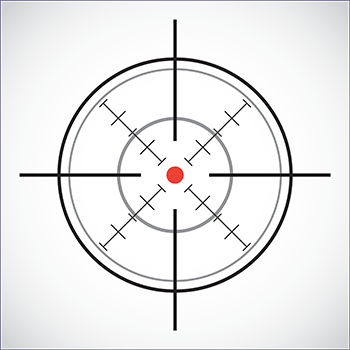 remember sitting in waiting rooms, looking out the window, and using the crisscrossed wire in the window as a cross-hair, lining up shots to imaginary bad guys, and saving the day.
remember sitting in waiting rooms, looking out the window, and using the crisscrossed wire in the window as a cross-hair, lining up shots to imaginary bad guys, and saving the day.
Admittedly, until researching for this article, I never knew why the wires were there and the part they played in curtain walls. In fact, over a year ago, I had never heard of the concept of a curtain wall.
Have you?
What are Curtain Walls?
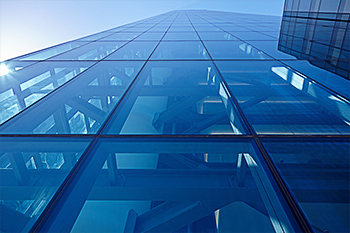 A curtain wall system refers to a non-structural, outer wall. The term curtain refers to wall panels attached on the outside of the floor slabs. In layman terms, they're hung on the building just like a curtain. In most cases, large, high-rise commercial buildings use curtain walls.
A curtain wall system refers to a non-structural, outer wall. The term curtain refers to wall panels attached on the outside of the floor slabs. In layman terms, they're hung on the building just like a curtain. In most cases, large, high-rise commercial buildings use curtain walls.
Unlike other forms of exterior walls that form a fundamental component of the building structure, curtain walls only bear their weight. Any weight imposed by external factors transfers to the main structure through the columns or floors of the building.
Typical curtain wall installation includes encasing glass in aluminum frames, then attached to the structure using a steel anchor.
Curtain Walls vs. Window Walls
I'd like to make just a quick note about window walls. Curtain walls and window walls are members of the same family tree, although on different branches. The most significant difference between the two wall systems is how they're used. Curtain walls are commercial, whereas the residential application fits better with window walls.
What Do Curtain Walls Do?
Like any other wall, the primary purpose of curtain walls is shielding the interior of the building from external factors such as wind, rain, extreme temperatures, sun exposure, and noise.
The popularity of curtain walls increased rapidly from the 1930s when first used. Curtain walls are now a key feature in multistory buildings for many reasons.
The most notable advantage of curtain walls is their appearance. The reflective glass surface offers a sophisticated look, significantly enhancing its visual appeal. Curtain walls are now the hallmark of contemporary city skylines, used to achieve a host of purposes, including:
Energy-Efficiency
 Curtain walls can be double-glazed or treated, enhancing insulation. Once enveloping a building with curtain walls, the heat is kept outside during summer and inside during winter.
Curtain walls can be double-glazed or treated, enhancing insulation. Once enveloping a building with curtain walls, the heat is kept outside during summer and inside during winter.
The stabilized temperature reduces the demands on the HVAC system, which then reflects on power bills. Remember, curtain walls are mostly used in high-rise commercial buildings where maintenance costs run into thousands of dollars. A wall offering a high level of thermal performance provides significant savings. It is also worth noting that building regulations have precise requirements on energy efficiency, and using these walls helps achieve the required rules.
Transparency
Curtain walls allow natural light into your space. The transparent/translucent glass helps maximize the usage of natural light, always a key consideration in any architectural design.
Natural light instantly makes space appear larger and livelier. People enjoy wall-to-wall views. In high-rise buildings, that includes the sight of the city below in all its splendor. Letting in the sunshine also means that less electricity is needed for running the lights.
Design Flexibility
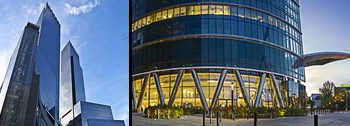 Curtain walling systems are incredibly flexible, allowing for complex and uniquely shaped structures. There have been buildings emerging in the recent past in all kinds of shapes such as round, oval, triangular, wavy, and who knows what else is next.
Curtain walling systems are incredibly flexible, allowing for complex and uniquely shaped structures. There have been buildings emerging in the recent past in all kinds of shapes such as round, oval, triangular, wavy, and who knows what else is next.
Transparent glass is the most characteristic feature of curtain walls, but there are plenty of other options such as colored/opaque glass, metal, and stone. These materials provide a wide variety of colors, textures, and finishes for that captivating look. The panels allow for unusual shapes such as angles or curves.
Structural Stability
The fragile look of the glass façade should not deceive you; curtain walls offer the necessary agility withstanding external forces such as high winds.
The walls reduce sway by transferring the kinetic energy to the main structure. The panels, spanning multiple floors, are designed with a space between them accommodating thermal expansion and contraction.
Curtain walls also prevent water penetration and the consequent damages associated with water retention. This benefit enhances the durability of the structure and reduces maintenance costs.
Fire Resistance
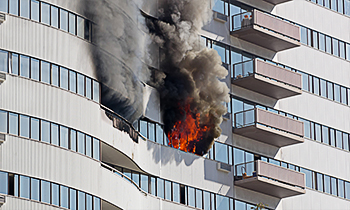 In case of fire, curtain walls inhibit the spread of fire from one floor to another. In some cases, the glass acts as a barrier. The glass slows or sometimes prevents the fire from spreading across the surface of the building. This ability is a massive benefit in tall buildings where fire otherwise rapidly spreads upwards, increasing the danger and damage.
In case of fire, curtain walls inhibit the spread of fire from one floor to another. In some cases, the glass acts as a barrier. The glass slows or sometimes prevents the fire from spreading across the surface of the building. This ability is a massive benefit in tall buildings where fire otherwise rapidly spreads upwards, increasing the danger and damage.
For many years, polished wired glass was the only type of glass passing NFPA 80. Appearances were deceiving; although the glass looked secure, the wiring only held the glass in place in case of a fire. Ordinary glass shatters when heated over 250 ºF. That shattering glass creates a grenade-like effect, expelling the wire-like shrapnel, causing significant injuries.
Increasing injuries and the desire for a modern-looking, fire-rated curtain wall was the impetus behind the research for new solutions. One such solution led to the development of impact safety glass that blocks heat.
Framing materials have also grown to become fire-resistive, too, by using roll-formed steel using thin gauge steel coils. This method produces narrower frames than traditional hollow metal steel frames.
A supplementary benefit of these next-generation fire-rated steel curtain wall systems is their ability to achieve nearly any finished look. The steel profiles can be powder coated at the factory, while the exterior cover caps can be manufactured from aluminum or stainless steel and then finish matched. If the cover cap is aluminum, it can be painted or anodized. The shape of the cover cap can also be customized; however, this necessitates early involvement with the manufacturer or supplier to ensure all project needs can be met.
These are just some advantages that continue propelling curtain walls to the top of the list of options for commercial buildings. This system is also cheaper when compared to other wall options.
Types of Curtain Wall Systems
There are two types of curtain wall systems, depending on the method used to assemble the components. There is a third type, although less common, that borrows from the characteristics of the two.
Unitized System
Component assembly occurs in the factory. Afterward, the assembled components are transported to the construction site. The size of the unit depends on the distance between one floor and the other. High-rise buildings typically use unitized systems. Since components arrive preassembled, the installation process is more straightforward and requires minimal equipment. A temporary hoist or a mini-crane is generally adequate for installation.
Ladder System
The ladder system has a lot of similarities with the stick-built system. Some components of the curtain wall are prefabricated in a factory while others on the installation site. In most cases, the factory assembles the frames before transporting them to the site. After installing the frames to the building, installing the glass comes next.
This method borrows features from the unitized and stick-built systems.
Stick-Built System
Here the different components of the curtain walls are fixed piece-by-piece onto the structure of the building. Low-rise buildings typically use this system. The sticks refer to the aluminum frames set between floors, both vertically and horizontally. Cranes and scaffolding provide external support during installation.
The installation process takes more time than the former, but allows for adjustments as necessary, unlike a complete unit.
How are Curtain Wall Systems Built?
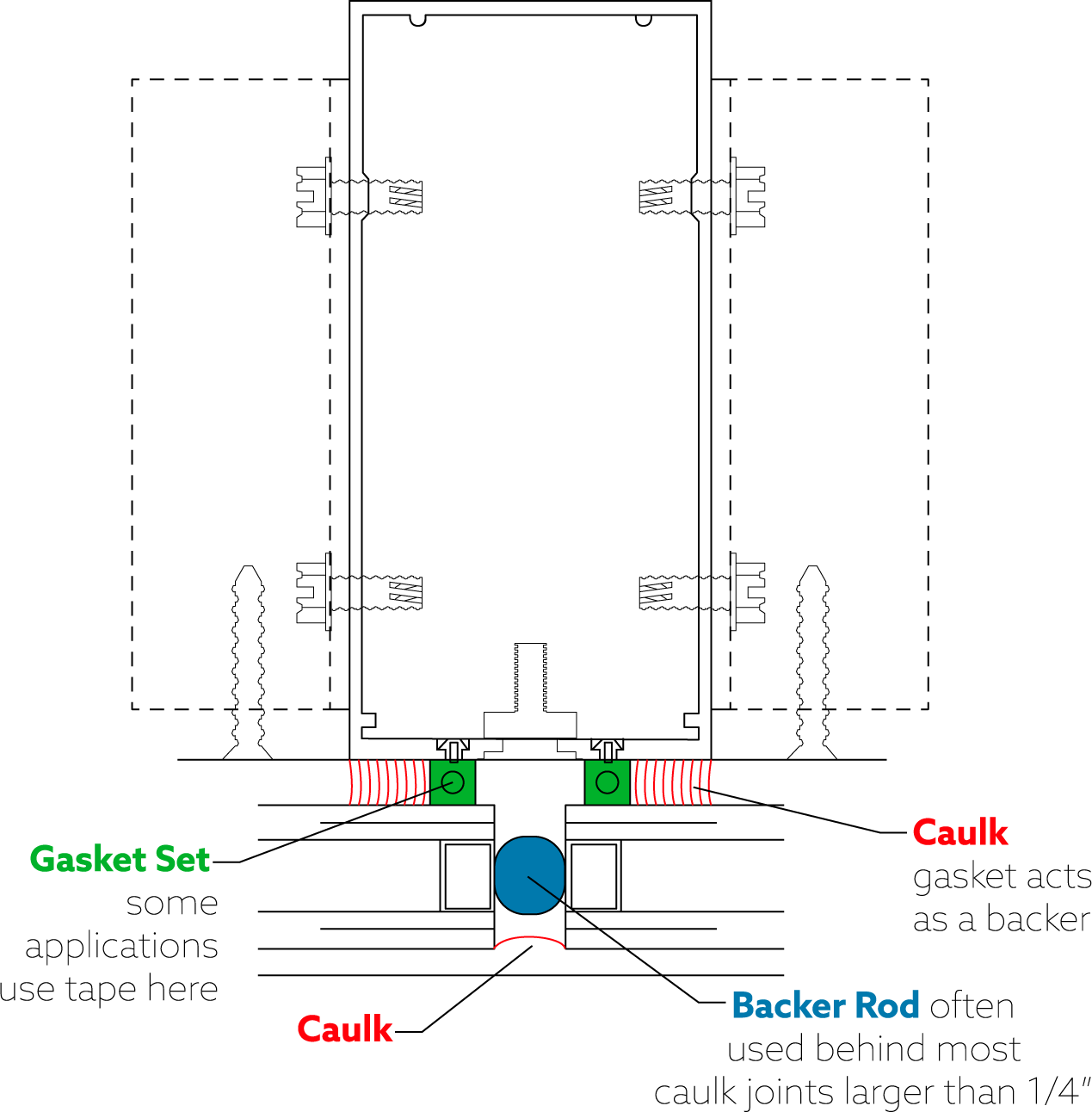 The construction of a curtain wall consists of two main components: the frame and the glass.
The construction of a curtain wall consists of two main components: the frame and the glass.
The frame is typically aluminum and, in some cases, steel. Aluminum is the first choice because it's light. Different types of glass can be used, such as annealed glass, tempered glass, laminated glass, and so on. The assembly of these components takes place in the factory or on the installation site.
Factory assembly saves on installation time and labor. Assembling on-site requires more time and equipment, but allows for adjustments if necessary. In some cases, manufacturers substitute glass with metal panels or thin stone, although glass remains the most common.
Structural Glazing vs. Curtain Walls
Another phrase commonly heard is structurally glazed. The glass is bonded to the curtain wall framing using Very High Bond (VHB) tape along the edge of the daylight opening then caulking the rest of the area using silicone. (Image to come)
Here, the glass is integral to the construction design and carries some weight in the structure, unlike curtain wall systems, which only bear their weight.
While curtain walls cover the entire building exterior, structural glazing consists of large glass panels installed alongside other building materials such as stone.
Either way, a glass exterior bears a host of benefits and continues to be a predominant feature in future structures.
In Sum
The prominence of curtain wall systems has been on a steady upward trajectory. This trend is likely to continue. Increased environmental awareness, coupled with stringent government regulations, have increased the demand for green buildings, and curtain wall designs have a lot to offer.
Then there is the most appealing feature of all - the design flexibility allowing for the construction of uniquely-shaped buildings, unlike anything we've seen before. There's no doubt that curtain wall systems will continue to grow exponentially for years to come.
Nowadays, when I'm in a waiting room, I look out the window with regret because the bad guys avoided their inevitable fate.
After all, there's no X for me to use to find them.